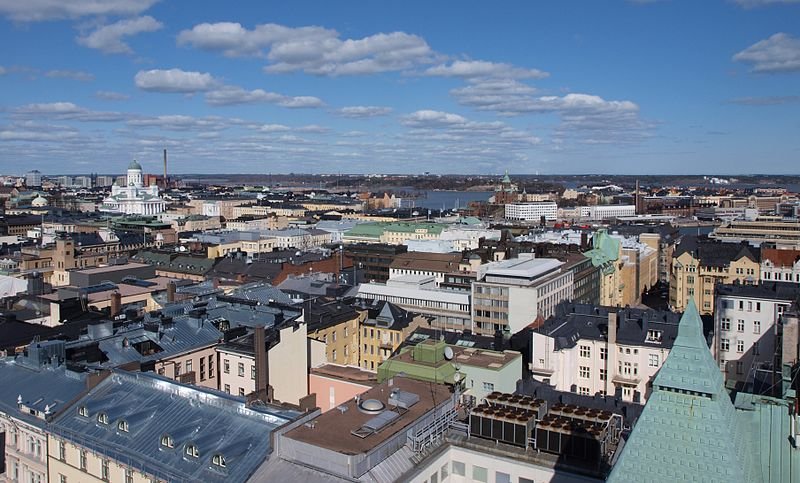 Helsinki skyline, Finland
Helsinki skyline, FinlandSource: https://commons.wikimedia.org/wiki/File:Skyline_of_Helsinki_as_seen_from_the_Erottaja_fire_station.jpg
Author: JIP

Helsinki (Swedeish: Helsingfors) is the capital and largest city in Finland. Located on the shores of the Gulf of Finland, Helsinki covers 715.49 sq km (276.3 sq mi) and has a population of 589,000 (2011 estimate), within a metropolitan area that has 1.3 million inhabitants. One in four Finnish person lives within the Greater Helsinki area.
Helsinki is in the Eastern European Time, which is two hours ahead of Coordinated Universal Time (UTC+2) and three hours ahead during Daylight Saving Time of summer. 84% of the population are Finnish while 6.1% are Swedish. The city is the political, educational, financial, cultural and research hub of Finland, with most of the major companies of the country having their headquarters there.
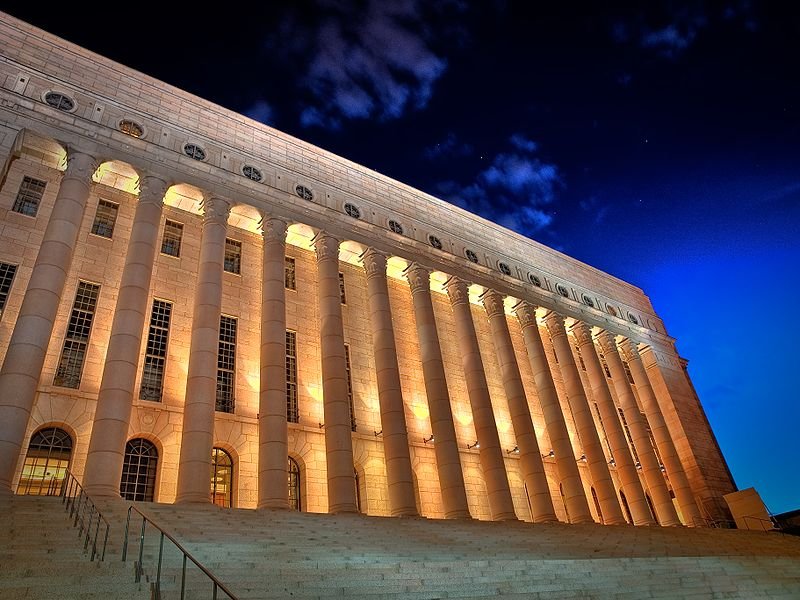 The Finnish Parliament Building, Helsinki
The Finnish Parliament Building, HelsinkiSource: https://commons.wikimedia.org/wiki/File:Eduskuntatalo_Helsinki.jpg
Author: Janne Hellsten

Helsinki covers fragments of land on the southern coast of Finland. It includes numerous islands and islets. The city experiences a humid continental climate. Despite its northern latitude, temperatures in Helsinki are lowered by the Baltic Sea and Gulf Stream.
July tends to be the warmest month, when the average temperature rises to 20.9°C (69.6°F). February is the coldest month, when the temperature drops to -5°C (23°F). Snow can be expected from December through March. Longest days are in June, which gets 297 hours of sunshine, compared with only 29 hours for the whole of December. Wettest month is August, with 78 mm (3 in) of precipitation.
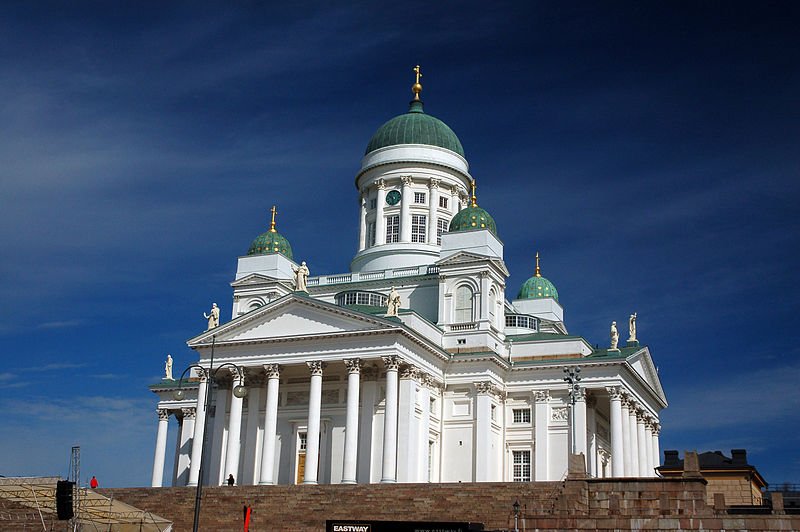 Helsinki Lutheran Cathedral
Helsinki Lutheran CathedralSource: https://commons.wikimedia.org/wiki/File:Visit-suomi-2009-05-by-RalfR-114.jpg
Author: Marcela

Helsinki was founded by King Gustav I of Sweden in 1550. It was named Helsingfors in Swedish, and translated Helsinki in Finnish. King Gustav I established Helsingfors with the intention of competing with the Hanseatic city of Tallinn, then known as Reval. However Helsinki was a distant competitor mired by powerty, diseases and wars. Its position was only strengthened when the Sveaborg Fortress (today known in Finnish as Suomenlinna) was built.
Helsinki remained an isolated hamlet until the Finnish War (1808-09), in which Sweden lost Finland to the Russian Empire. Russia's Czar Alexander I then made Finland an autonomous grand duchy. Until then, the capital of Finland was at Turku. To keep Swedish influence over Finland at bay, he made Helsinki the new capital. This elevation to capital status helped fuel the growth of Helsinki, and it has remained the capital of Finland since.
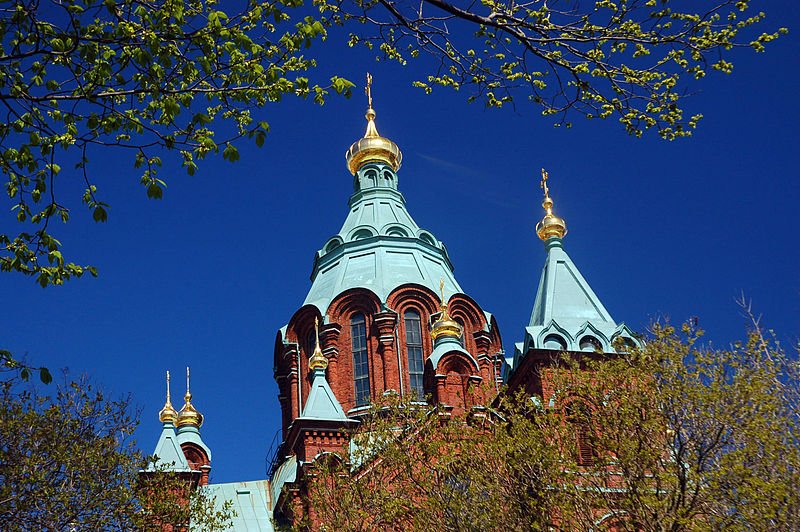 Uspenski Cathedral, Helsinki
Uspenski Cathedral, HelsinkiSource: https://commons.wikimedia.org/wiki/File:Visit-suomi-2009-05-by-RalfR-214.jpg
Author: Marcela

Visiting Helsinki
The Helsinki-Vantaa International Airport (HEL) is the main international airport for Finland. It is located in Vantaa, a city within the Helsinki Metropolitan Area, to the north of downtown Helsinki.Your transport options on arrival at the Helsinki Airport include the Finnair City Bus which takes about 35 minutes to reach the to the Helsinki Railway Station for €6.50; the regional bus 615, which takes 40 minutes to reach the aforementioned railway station for €4; the regional buses 519 or 520, which goes to various subway stations and the eastern suburbs of Helsinki; the minivans that charge €27 for two persons to the city center; and the regular taxis that charge €30-40, depending on the location in Helsinki.
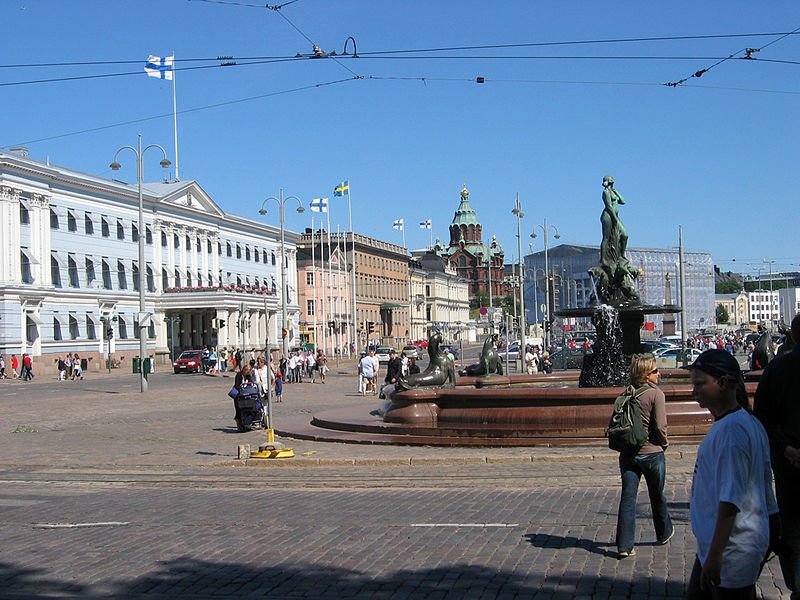 Pohjoisesplanadi Street, Helsinki
Pohjoisesplanadi Street, HelsinkiSource: https://commons.wikimedia.org/wiki/File:Juhannus-helsinki-2007-048.jpg
Author: Marcela

Exploring Helsinki
The transport authority in Helsinki is HSL (Helsingin seudun liikenne), which runs almost all forms of public transport in the Helsinki metropolitan area, including the buses, trams, trains, subway and ferry. If you are going to use public transport extensively, get the Helsinki Card. It costs €33 for one day or €55 for 3 days, and it allows you unlimited rides on all the various public transports.Places of Interest in Helsinki, Finland
- Ateneum Art Museum
- Church in the Rock
- Church of Kallio
- Design Museum
- Finlandia Hall
- Helsinki City Museum
- Heureka Science Centre
- Kiasma Museum of Contemporary Art
- Korjaamo Cultural Factory
- Korkeasaari
- Lutheran Church
- Mannerheim Museum
- Military Museum
- Museum of Cultures (Kulttuurien museo)
- National Museum of Finland (Kansallismuseo)
- Olympic Stadium
- Parliament House (Eduskunta)
- Pihlajasaari
- Seurasaari Open Air Museum
- Sibelius Monument
- St John's Church
- Suhe Church
- Suomenlinna
- Uspenski Cathedral
 Latest updates on Penang Travel Tips
Latest updates on Penang Travel Tips

Copyright © 2003-2025 Timothy Tye. All Rights Reserved.

 Go Back
Go Back